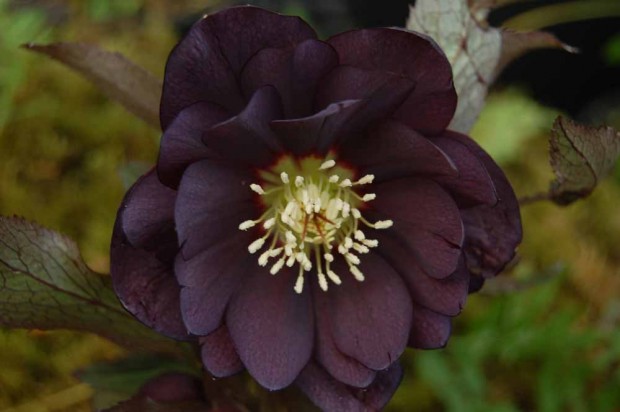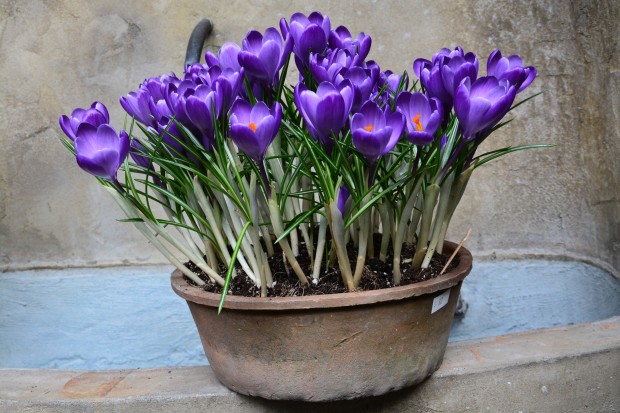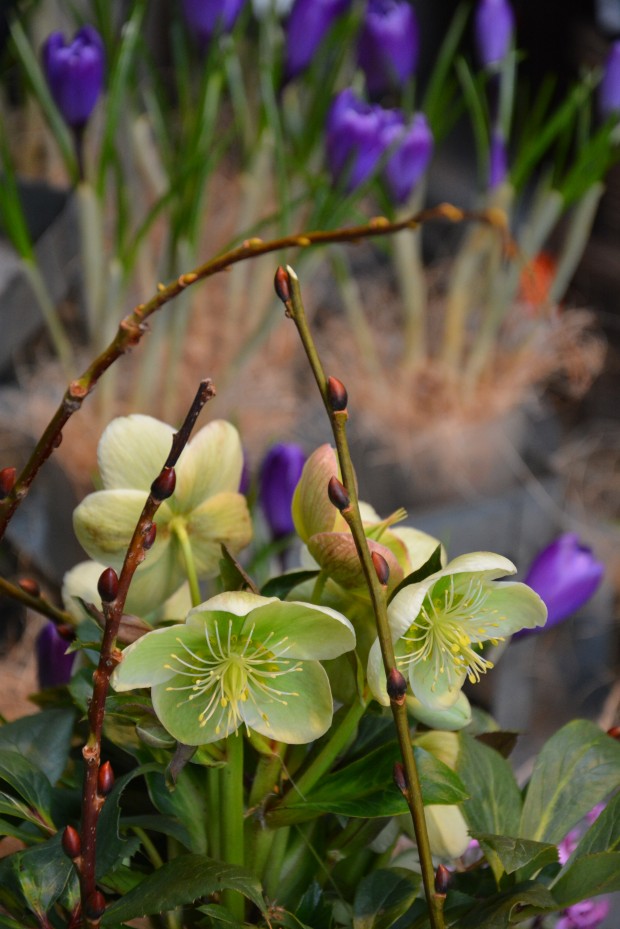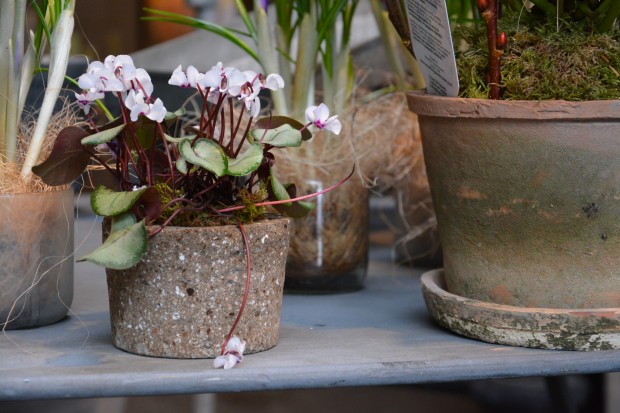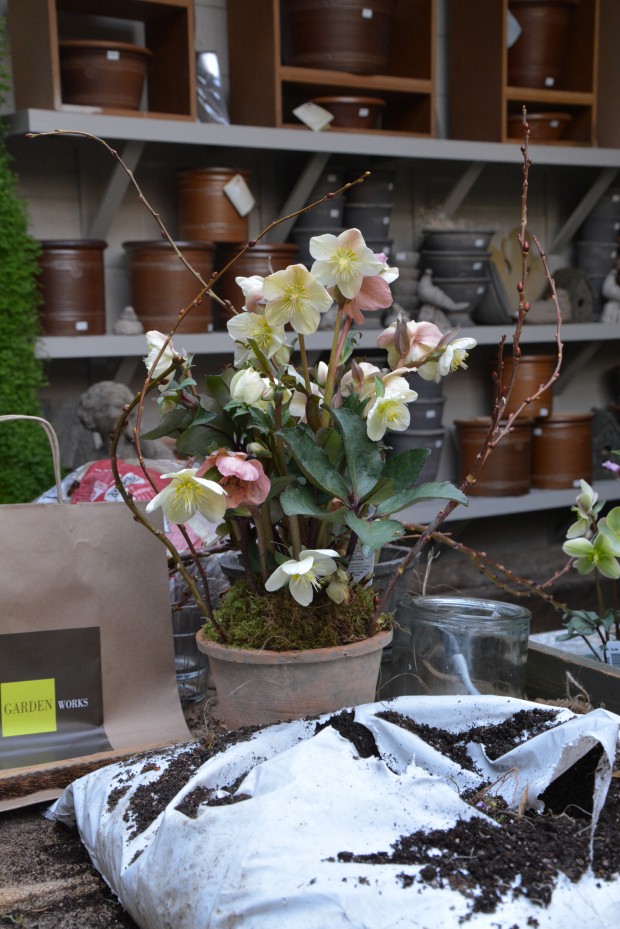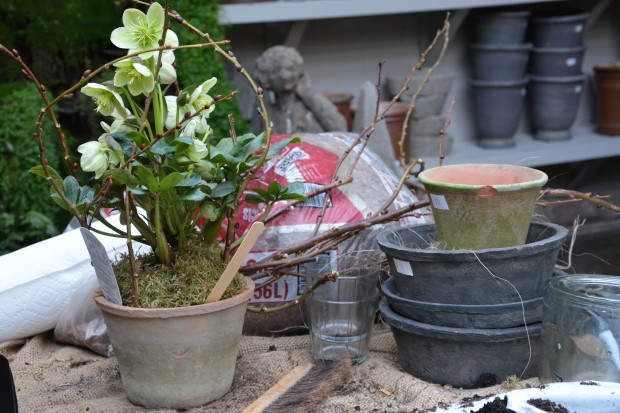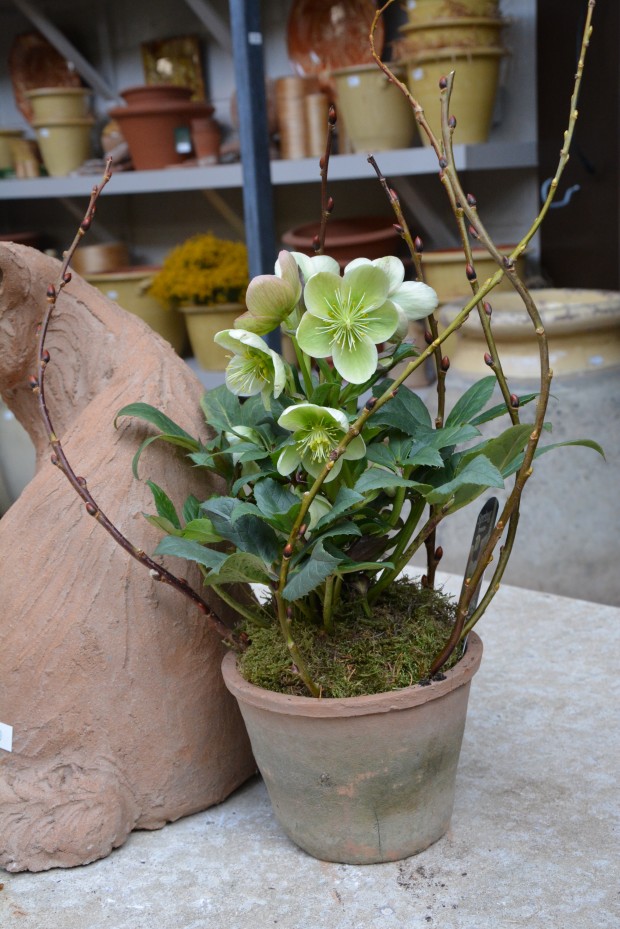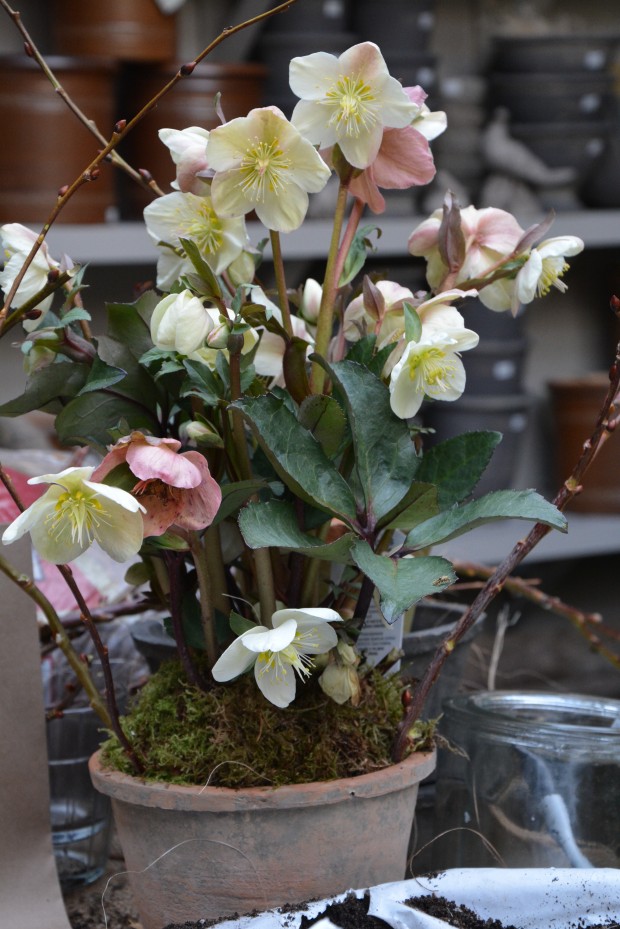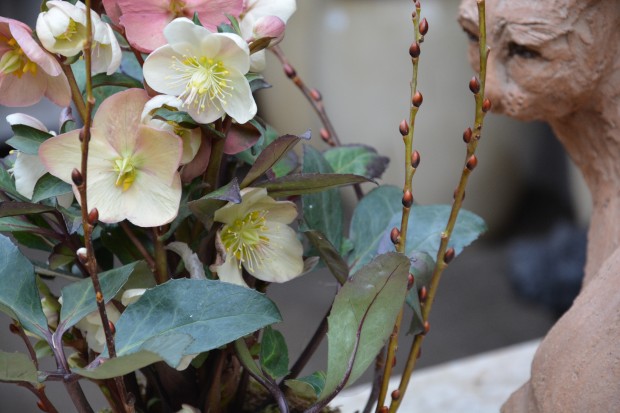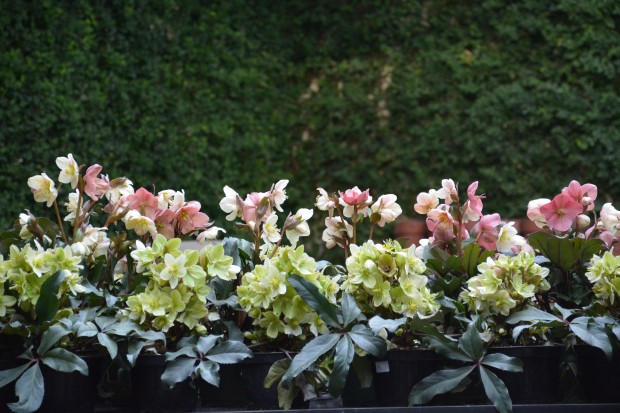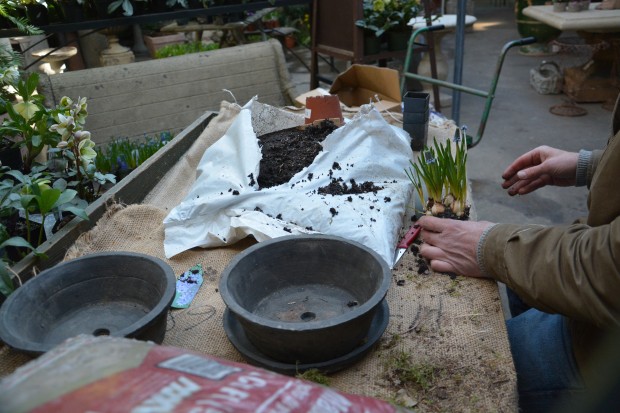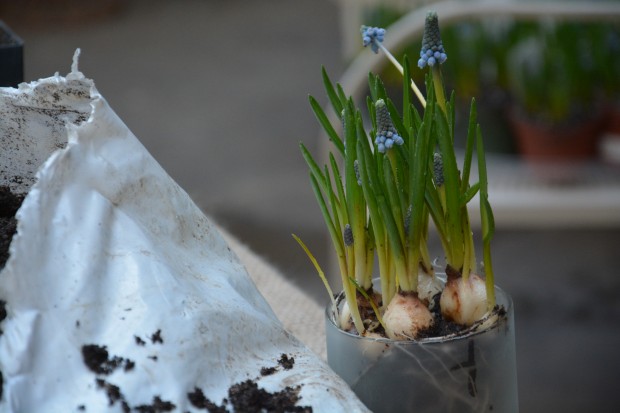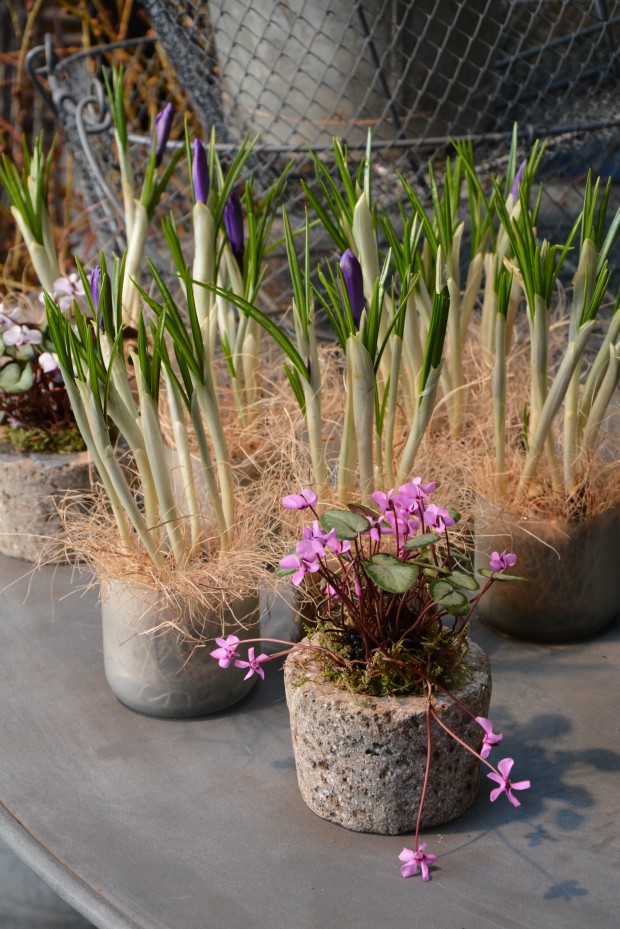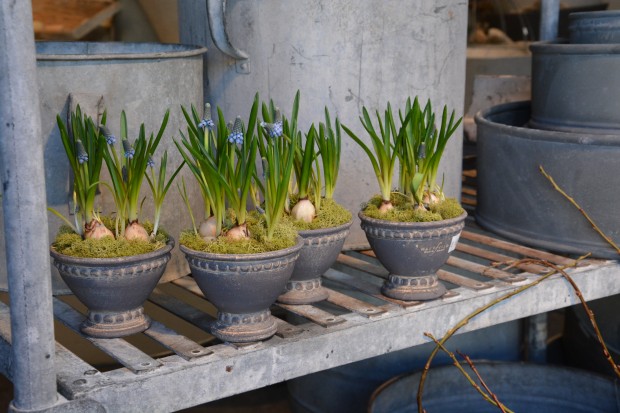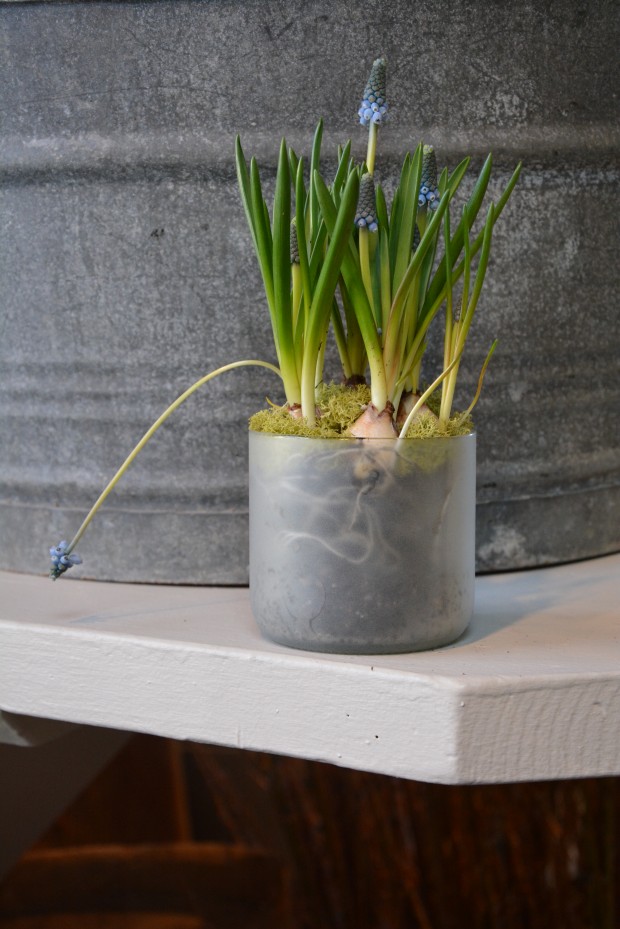Detroit Garden Works plans to hold its first ever spring festival the weekend of March 21, 22, and 23. We are calling the event the Helleborus Festivalis, in celebration of one of our most favorite spring flowering perennials, the hellebore. Rob has spent weeks traveling to and ordering from nurseries all over the US and Canada, in order for us to have a collection available that will enchant both gardeners unfamiliar with hellebores, and long time serious collectors. I have had lots of emails requesting more information on exactly what plants we have available, and in what sizes. This post is some about our love for hellebores, and more about the specifics. 600 hellebores have been delivered over the past 2 weeks-to follow is a the Helleborus Festivalis preview. Helleborus Onyx Odyssey, pictured above, is certainly one of the most striking varieties we have been able to obtain.
 This very dark and inky wine red double hellebore was bred by Marietta O’Byrne in Eugene, Oregon, and and introduced into commerce in 2008. We have 20 in bloom 1 gallon size stocky plants available. This cultivar is most definitely not the helleborus orientalis my Mom grew. The O’Byrne’s breeding program has turned over the hellebore world.
This very dark and inky wine red double hellebore was bred by Marietta O’Byrne in Eugene, Oregon, and and introduced into commerce in 2008. We have 20 in bloom 1 gallon size stocky plants available. This cultivar is most definitely not the helleborus orientalis my Mom grew. The O’Byrne’s breeding program has turned over the hellebore world.
 Other 1 gallon size hellebores, pictured above from left to right, helleborus Spring Promise Conny, which features white blooms with distinctive dark wine red speckles. Also pictured, Spring Promise Elly, a double rose pink, the heavy flowering single flowering Merlin, and Spring Promise Bridget, a frilly single pink. As with helleborus Onyx Odyssey, these hellebores are all blooming. Have the idea to scout what cultivars you might want to grow or add to your collection? We have other hellebores in bloom. Mahogany Snow. Icebreaker Fancy. Icebreaker Prelude. Our Icebreaker Corsica is already sold out-sorry.
Other 1 gallon size hellebores, pictured above from left to right, helleborus Spring Promise Conny, which features white blooms with distinctive dark wine red speckles. Also pictured, Spring Promise Elly, a double rose pink, the heavy flowering single flowering Merlin, and Spring Promise Bridget, a frilly single pink. As with helleborus Onyx Odyssey, these hellebores are all blooming. Have the idea to scout what cultivars you might want to grow or add to your collection? We have other hellebores in bloom. Mahogany Snow. Icebreaker Fancy. Icebreaker Prelude. Our Icebreaker Corsica is already sold out-sorry.
 Snow Frills is a semi double to double pure white. Breaktakingly beautiful, the flowers of this hellebore. This sturdy plant comes in an 8″ pot with multiple blooms, as pictured. Snow Frills is that new cultivar of hellebore which features outfacing or upfacing flowers. If you like white flowers in the spring, this cultivar may interest you.
Snow Frills is a semi double to double pure white. Breaktakingly beautiful, the flowers of this hellebore. This sturdy plant comes in an 8″ pot with multiple blooms, as pictured. Snow Frills is that new cultivar of hellebore which features outfacing or upfacing flowers. If you like white flowers in the spring, this cultivar may interest you.
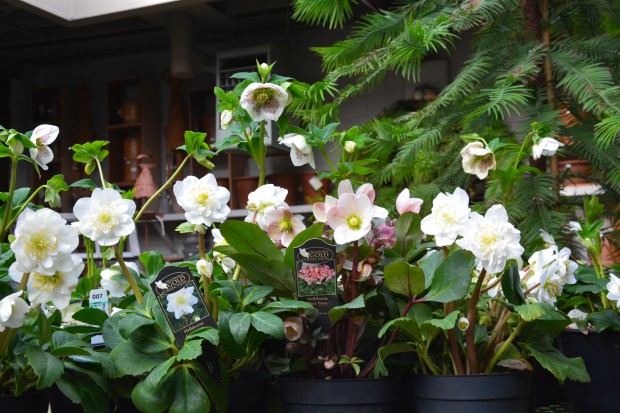 Both Snow Frills and Merlin are substantial blooming plants in 8 inch pots. Merlin is a single blush pink, and clearly a heavy bloomer.
Both Snow Frills and Merlin are substantial blooming plants in 8 inch pots. Merlin is a single blush pink, and clearly a heavy bloomer.
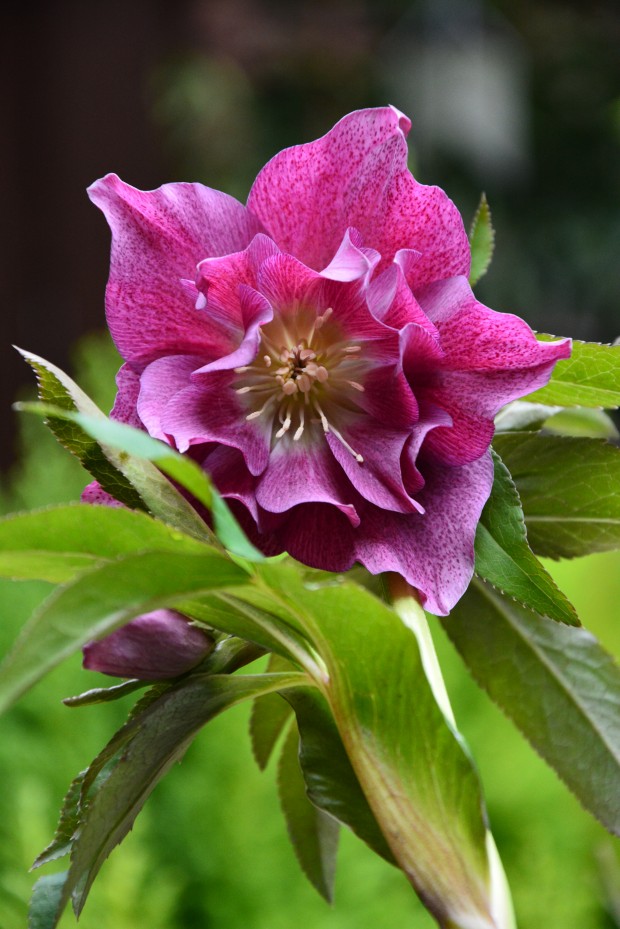 This picture is a closeup of the bloom of the Spring Promise cultivar known as Elly. The double flowers are astonishing in color and form . We have a limited number of 1 gallon blooming plants available.
This picture is a closeup of the bloom of the Spring Promise cultivar known as Elly. The double flowers are astonishing in color and form . We have a limited number of 1 gallon blooming plants available.
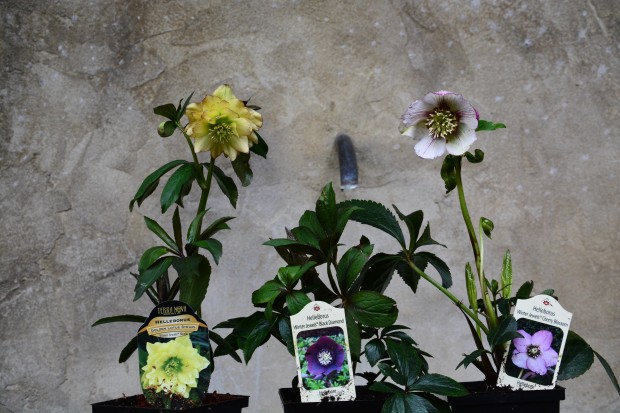 We have a select group pf 4.5 inch pots of hellebores ready. Though these are smaller plants, many of them are blooming.
We have a select group pf 4.5 inch pots of hellebores ready. Though these are smaller plants, many of them are blooming.
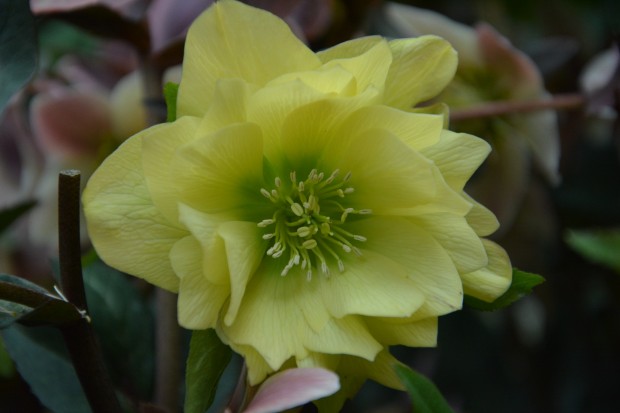 Golden Lotus is a strain of double flowered yellow hellebores exhibiting subtly different characteristics. Though every plant is distinctly individual, every member of this seed strain group is stellar. All of our 4.5 inch plants are blooming.
Golden Lotus is a strain of double flowered yellow hellebores exhibiting subtly different characteristics. Though every plant is distinctly individual, every member of this seed strain group is stellar. All of our 4.5 inch plants are blooming.
 Black Diamond is just that-jet black. None of these 4.5 inch plants are in bloom. If you have a mind to have faith in a long history of breeding and a plant not in flower, we have healthy lustily growing plants available.
Black Diamond is just that-jet black. None of these 4.5 inch plants are in bloom. If you have a mind to have faith in a long history of breeding and a plant not in flower, we have healthy lustily growing plants available.
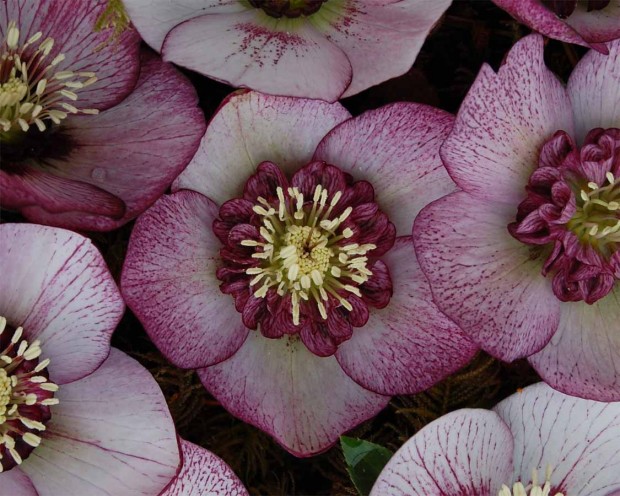 We have four flats of 4.5 inch helleborus Winter Jewel Cherry Blossom available for purchase. Only one plant has a flower. This cultivar is a must have, in my opinion. Most nurseries offer just a few cultivars for sale, in their green state. This makes them easy to miss. Hellebores grow slowly. Few cultivars grow on to blooming size in one season. If you are a gardener willing to take chances, sign up for a Cherry Blossom. Next spring, the anemone flowered blooms will enchant you.
We have four flats of 4.5 inch helleborus Winter Jewel Cherry Blossom available for purchase. Only one plant has a flower. This cultivar is a must have, in my opinion. Most nurseries offer just a few cultivars for sale, in their green state. This makes them easy to miss. Hellebores grow slowly. Few cultivars grow on to blooming size in one season. If you are a gardener willing to take chances, sign up for a Cherry Blossom. Next spring, the anemone flowered blooms will enchant you.
 In this picture, Spring Promise Bridget is sharing the stage with flats of English daisies. We do have a number of other spring flowering perennials in stock as companions to our hellebores. Bellis, double flowering primroses, and several cultivars of auricula primroses are available along with dwarf daffodils and hyacinths.
In this picture, Spring Promise Bridget is sharing the stage with flats of English daisies. We do have a number of other spring flowering perennials in stock as companions to our hellebores. Bellis, double flowering primroses, and several cultivars of auricula primroses are available along with dwarf daffodils and hyacinths.
 We do have some 2 gallon pots of hellebores available. Joseph Lemper is a white hellebore blooming very early in the spring. The Pink Frost Hellebore pictured above- big plants.
We do have some 2 gallon pots of hellebores available. Joseph Lemper is a white hellebore blooming very early in the spring. The Pink Frost Hellebore pictured above- big plants.
This Winter Jewels Golden Sunrise-we have this plant in one gallon size. Though our plants are not flowering, the promise of what is to come is clear. We also have good sized divisions of the pale yellow hellebore, Spring Promise “Sally”.
 This has been a very long and very trying winter. Detroit Garden Works has the idea to jump start spring. Helleborus Festivalis-a week from tomorrow. With a collection of hellebores and accompanying plants that are eminently garden worthy. If you are a collector, or a gardener willing to gamble, we have a few divisions of rarer hellebores available. White Lady, Frilly Kitty, Tiffany, Valerie, WD Elegance White, WD Pale Pink, Winter Jewel Sparkling Diamond, Winter Jewel Double Painted, Winter Jewel Jade Tiger, Winter Thriller Green Gambler-email me for details. We are ready for spring-what about you?
This has been a very long and very trying winter. Detroit Garden Works has the idea to jump start spring. Helleborus Festivalis-a week from tomorrow. With a collection of hellebores and accompanying plants that are eminently garden worthy. If you are a collector, or a gardener willing to gamble, we have a few divisions of rarer hellebores available. White Lady, Frilly Kitty, Tiffany, Valerie, WD Elegance White, WD Pale Pink, Winter Jewel Sparkling Diamond, Winter Jewel Double Painted, Winter Jewel Jade Tiger, Winter Thriller Green Gambler-email me for details. We are ready for spring-what about you?
